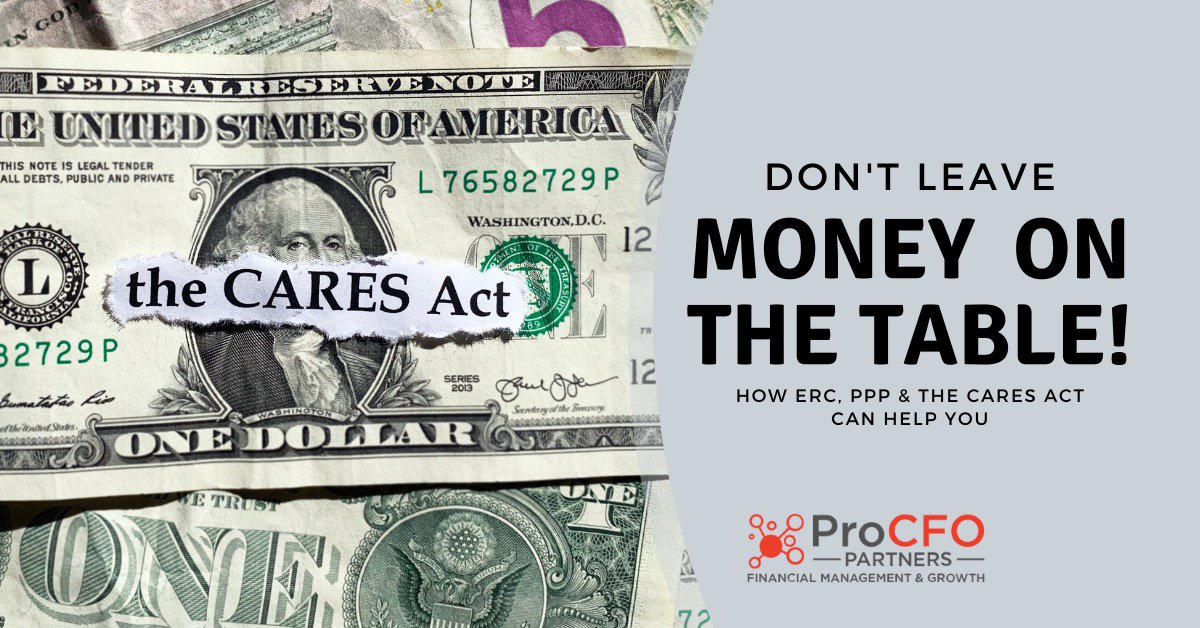How ERC, PPP & the CARES Act Can Help Your Business
Mar 12, 2021
The unique challenges companies have faced with the COVID-19 pandemic have been met with unique opportunities for assistance. The latest round of assistance available, including the extended Employee Retention Credit (ERC) makes it easier for companies to take advantage. In this article we’ll explore what assistance is available and how you can make sure you’re not leaving any money on the table that could be helping our company and your employees.
What is the CARES Act?
The Coronavirus Aid, Relief, and Economic Security Act (CARES) is an economic stimulus bill passed in March 2020. Among the assistance provided in the CARES Act is the Paycheck Protection Program, or PPP and the Employer Retention Credit, or ERC.
What is the Paycheck Protection Program?
The Paycheck Protection Program, or PPP, provides support for eligible small businesses, nonprofits, self-employed individuals, among others. It’s designed to encourage companies to maintain their payroll, avoid layoffs or hire back laid off employees by essentials covering overhead. Administered by the Small Business Administration, organizations can work with lenders to demonstrate need and secure funds. Funds are promised as a very low interest loan or, for many companies, a loan that will be completely forgiven if they can prove they used PPP funds appropriately.
What is the Employee Retention Credit?
The Employee Retention Credit, or ERC, is a tax credit introduced as a result of COVID-19 that’s designed to encourage employers to keep workers on the payroll. The credit can be applied against some employment taxes equal to 50% of qualified wages paid to employees.
Eligible employers include those who operate during January 1,2021, through June 30, 2021 and experience operation suspensions as a result of COVID-1o or can show a decline of 20% in gross receipts from a calendar quarter in 2021 compared to the same quarter in 2020.
The ERC was extended in early 2021 with a less onerous process than when it was first introduced in 2020 and less stringent requirements to take advantage, with more flexible provisions that allow employers to have the money they need when the need it, as a benefit of advance payment of the credit.
What’s the Difference Between ERC and PPP?
Both the Paycheck Protection Program and the Employee Retention Credit are meant to help keep employees on the payroll. PPP is a loan designed for small businesses that have fewer than 500 employees. Companies can borrow up to $10 Million, with the loan amount calculated based on average monthly payroll costs. There’s a cap on the total dollar amount of loans available, so at some point the window of availability will close.
The Employee Retention Credit allows a reduction in payroll tax deposits or an advance refund, allowing businesses quick access to cash. Unlike PPP, it’s not a loan – nothing needs to be repaid. Businesses of all sizes are eligible, but the business has to show there was a closure, suspension, or significant decline in gross receipts as a result of COVID. There’s no cap on the total amount available, but employers can only claim up to $5000 per employee.
Fundamentally, the PPP is facilitated by the Small Business Association and local banks. This makes it easier for organizations to leverage existing banking relationships to help navigate the eligibility and application process. This is one reason PPP has been so popular – it has lower perceived barrier to get started and take advantage.
The ERC, on the other hand, is administered by the IRS, which can feel intimidating to some companies. Rightfully or not, the perception that “dealing with the IRS” will be cumbersome and complex keeps some companies from taking advantage of assistance. This could be one reason the ERC extension in 2021 was made easier and less intimidating – the government is trying to help companies weather the storm. In fact the application process itself for ERC starts with just a single form.
Another important aspect of the 2021 extension is companies can now enroll in PPP and ERC at the same time, where initially they couldn’t. This lets more companies benefit from more assistance, all designed to strengthen the workforce and economy.
How To Get Started With PPP or ERC?
In many cases the application processes for the Paycheck Protection Program is straight-forward enough where your accountant can work with your local bank to navigate the process. For the ERC, companies can submit a form (Form 7200) to request advance payment of employer credits due to COVID-19.
Information and documentation gathering will eventually be key for both PPP and ERC, and the more complex or sophisticated a company’s situation is, the more information it might need to provide. Your CFO or another senior financial strategist should be a key asset to manage these connections.
Especially now that a company can benefit from both PPP and ERC, with additional rounds and extensions of assistance, it’s important for companies to explore what’s available that could be right for them. Time is of the essence however – assistance like this won’t be available forever. Overwhelm, intimidation and frustration shouldn’t keep you from missing out on what could be waiting for you. The process can feel daunting, but it doesn’t have to be – a capable financial expert can help you understand what you qualify for, what information and documents you need to make things go smoothly, and how to get started.


